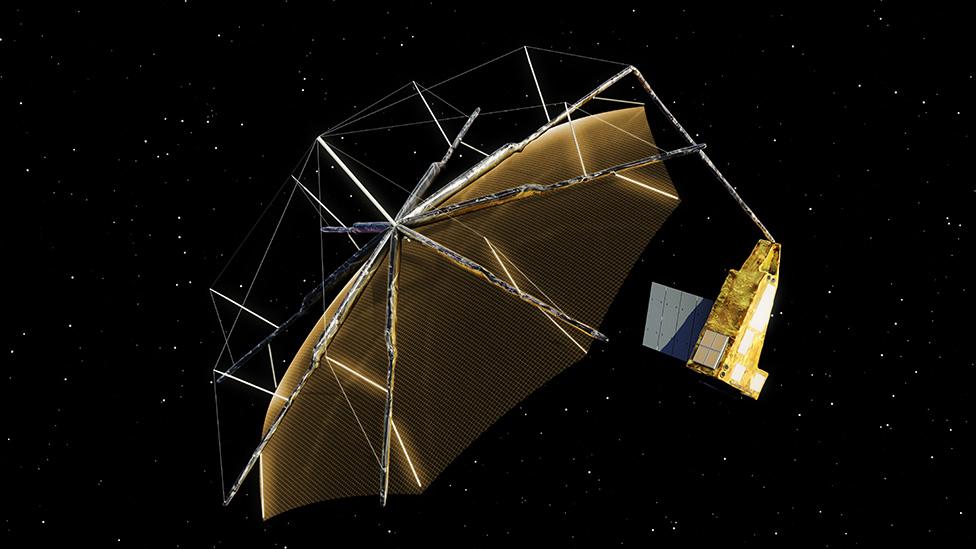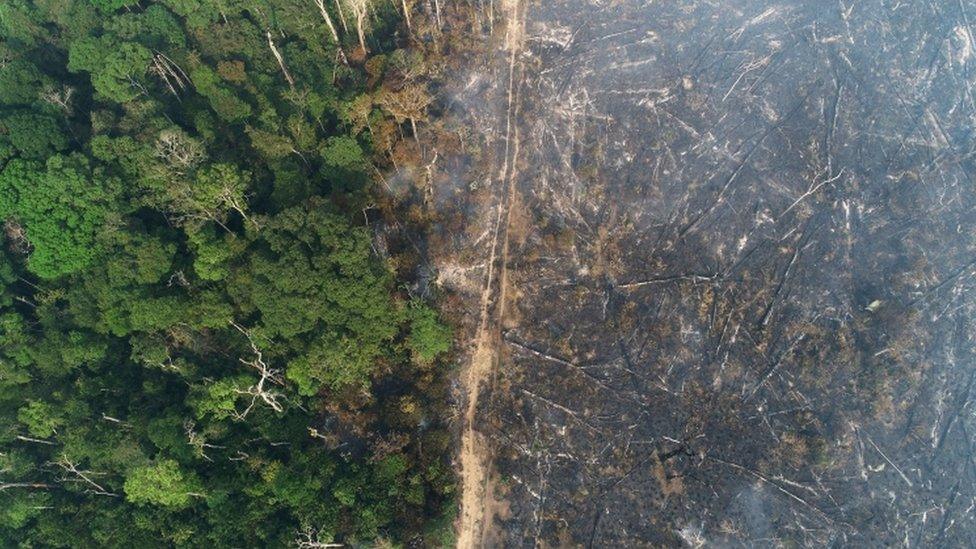Giant space 'umbrella' to weigh world's forests
- Published
- comments

Artwork: The 1.2-tonne Biomass satellite will be sent up into space
A huge satellite, which looks like a big umbrella, is heading into space to measure the Earth's forests.
The European Space Agency's Biomass satellite is being built in the UK.
The Biomass mission will use a type of radar which has never been flown to space before to analyse and map the woody parts of trees.
It has a 12m by 15m wire-mesh dish which folds up for launch and unfurls when it reaches space to allow it to look down to Earth and take readings.
As well as measuring the height and biomass of the trees, the mission will also make 3D maps of the forests on Earth.

Europe has bought in American expertise in large antenna-reflectors
The satellite contains a special 'P-band' radar which has a very long reach and it can 'see' through the leafy canopy of trees to the trunks and branches below to measure the trees' biomass and height.
The ESA says the mission will be able to provide much more accurate measurements of how forests affect the amount of carbon dioxide in the atmosphere.
Trees absorb large amounts of greenhouse gas carbon dioxide (CO2), but they also release it if they die or are destroyed.
It is very difficult to measure how much carbon is stored in a forest and especially difficult to track the changes over a number of years.

Deforestation like this in Brazil leads to the release of the harmful greenhouse gas carbon dioxide into the atmosphere
The mission aims to gather at least five years' worth of data and to be able to spot trends.
"It is about getting a much better handle on the role of forests, in either emitting carbon dioxide through destruction, or taking up carbon dioxide through growth," said Prof Shaun Quegan, the mission's principal scientist from the University of Sheffield.
Tracking biomass change will also be used to assess how governments are doing in meeting emissions targets and what climate plans they should be putting in place.
Lift-off for the satellite is expected towards the end of 2023.
- Published27 September 2021

- Published12 February 2022

